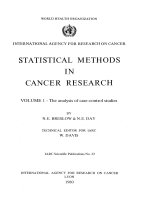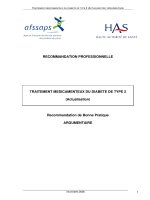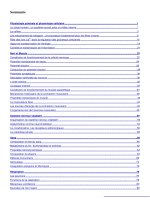Statistical Methods in Medical Research - part 1 pptx
Bạn đang xem bản rút gọn của tài liệu. Xem và tải ngay bản đầy đủ của tài liệu tại đây (838.75 KB, 83 trang )
To J.O. Irwin
Mentor and friend
Statistical Methods in
Medical Research
P. Armitage
MA, PhD
Emeritus Professor of Applied Statistics
University of Oxford
G. Berry
MA, PhD
Professor in Epidemiology and Biostatistics
University of Sydney
J.N.S. Matthews
MA, PhD
Professor of Medical Statistics
University of Newcastle upon Tyne
FOURTH EDITION
# 1971, 1987, 1994, 2002 by Blackwell Science Ltd
a Blackwell Publishing company
Blackwell Science, Inc., 350 Main Street, Malden, Massachusetts 02148-5018, USA
Blackwell Science Ltd, Osney Mead, Oxford OX2 0EL, UK
Blackwell Science Asia Pty Ltd, 550 Swanston Street, Carlton, Victoria 3053, Australia
Blackwell Wissenschafts Verlag, Kurfu
È
rstendamm 57, 10707 Berlin, Germany
The right of the Author to be identified as the Author of this Work has been asserted in accordance
with the Copyright, Designs and Patents Act 1988.
All rights reserved. No part of this publication may be reproduced, stored in a retrieval system, or
transmitted, in any form or by any means, electronic, mechanical, photocopying, recording or
otherwise, except as permitted by the UK Copyright, Designs and Patents Act 1988, without the prior
permission of the publisher.
First published 1971
Reprinted 1973, 1974, 1977, 1980, 1983, 1985
Second edition 1987
Reprinted 1988 (twice), 1990, 1991, 1993
Thrid edition 1994
Reprinted 1995, 1996
Fourth edition 2002
Reprinted 2002
Library of Congress Cataloging-in-Publication Data
Armitage, P.
Statistical methods in medical research / P. Armitage,
G. Berry, J.N.S. Matthews.Ð4th ed.
p. cm.
Includes bibliographical references and indexes.
ISBN 0-632-05257-0
1. MedicineÐResearchÐStatistical methods.
I. Berry, G (Geoffrey) II. Matthews, J.N.S. III. Title.
[DNLM: 1. Biometry. 2. ResearchÐmethods.
WA 950 A 733s 2001] R852 A75 2001 610
H
.7
H
27Ðdc21
00±067992
ISBN 0-632-05257-0
A catalogue record for this title is available from the British Library
Set by Kolam Information Services Pvt. Ltd., Pondicherry, India
Printed and bound in the United Kingdom by MPG Books Ltd, Bodmin, Cornwall
Commissioning Editor: Alison Brown
Production Editor: Fiona Pattison
Production Controller: Kylie Ord
For further information on Blackwell Science, visit our website:
www.blackwell-science.com
Contents
Preface to the fourth edition, ix
1 The scope of statistics, 1
2 Describing data, 8
2.1 Diagrams, 8
2.2 Tabulation and data
processing, 11
2.3 Summarizing numerical data, 19
2.4 Means and other measures
of location, 31
2.5 Taking logs, 33
2.6 Measures of variation, 36
2.7 Outlying observations, 44
3 Probability, 47
3.1 The meaning of probability, 47
3.2 Probability calculations, 50
3.3 Bayes' theorem, 54
3.4 Probability distributions, 59
3.5 Expectation, 63
3.6 The binomial distribution, 65
3.7 The Poisson distribution, 71
3.8 The normal (or Gaussian)
distribution, 76
4 Analysing means and proportions, 83
4.1 Statistical inference: tests and
estimation, 83
4.2 Inferences from means, 92
4.3 Comparison of two means, 102
4.4 Inferences from proportions, 112
4.5 Comparison of two
proportions, 120
4.6 Sample-size determination, 137
5 Analysing variances, counts and
other measures, 147
5.1 Inferences from variances, 147
5.2 Inferences from counts, 153
5.3 Ratios and other functions, 158
5.4 Maximum likelihood
estimation, 162
6 Bayesian methods, 165
6.1 Subjective and objective
probability, 165
6.2 Bayesian inference for a
mean, 168
6.3 Bayesian inference for
proportions and counts, 175
6.4 Further comments on
Bayesian methods, 179
6.5 Empirical Bayesian methods, 183
7 Regression and correlation, 187
7.1 Association, 187
7.2 Linear regression, 189
7.3 Correlation, 195
7.4 Sampling errors in regression and
correlation, 198
7.5 Regression to the mean, 204
8 Comparison of several groups, 208
8.1 One-way analysis of
variance, 208
8.2 The method of weighting, 215
8.3 Components of variance, 218
8.4 Multiple comparisons, 223
8.5 Comparison of several
proportions: the 2 Âk
contingency table, 227
8.6 General contingency tables, 231
8.7 Comparison of several
variances, 233
8.8 Comparison of several counts: the
Poisson heterogeneity test, 234
9 Experimental design, 236
9.1 General remarks, 236
9.2 Two-way analysis of variance:
randomized blocks, 238
v
9.3 Factorial designs, 246
9.4 Latin squares, 257
9.5 Other incomplete designs, 261
9.6 Split-unit designs, 256
10 Analysing non-normal data, 272
10.1 Distribution-free methods, 272
10.2 One-sample tests for
location, 273
10.3 Comparison of two
independent groups, 277
10.4 Comparison of several groups, 285
10.5 Rank correlation, 289
10.6 Permutation and Monte
Carlo tests, 292
10.7 The bootstrap and the
jackknife, 298
10.8 Transformations, 306
11 Modelling continuous data, 312
11.1 Analysis of variance
applied to regression, 312
11.2 Errors in both variables, 317
11.3 Straight lines through the
origin, 320
11.4 Regression in groups, 322
11.5 Analysis of covariance, 331
11.6 Multiple regression, 337
11.7 Multiple regression in
groups, 347
11.8 Multiple regression in the
analysis of non-orthogonal
data, 354
11.9 Checking the model, 356
11.10 More on data
transformation, 375
12 Further regression models for a
continuous response, 378
12.1 Polynomial regression, 378
12.2 Smoothing and
non-parametric
regression, 387
12.3 Reference ranges, 397
12.4 Non-linear regression, 408
12.5 Multilevel models, 418
12.6 Longitudinal data, 430
12.7 Time series, 449
13 Multivariate methods, 455
13.1 General, 455
13.2 Principal components, 456
13.3 Discriminant analysis, 464
13.4 Cluster analysis, 481
13.5 Concluding remarks, 483
14 Modelling categorical data, 485
14.1 Introduction, 485
14.2 Logistic regression, 488
14.3 Polytomous regression, 496
14.4 Poisson regression, 499
15 Empirical methods for
categorical data, 503
15.1 Introduction, 503
15.2 Trends in proportions, 504
15.3 Trends in larger
contingency tables, 509
15.4 Trends in counts, 511
15.5 Other components of x
2
,512
15.6 Combination of 2 Â 2
tables, 516
15.7 Combination of larger
tables, 521
15.8 Exact tests for
contingency tables, 524
16 Further Bayesian methods, 528
16.1 Background, 528
16.2 Prior and posterior
distributions, 529
16.3 The Bayesian linear
model, 538
16.4 Markov chain Monte
Carlo methods, 548
16.5 Model assessment and
model choice, 560
17 Survival analysis, 568
17.1 Introduction, 568
17.2 Life-tables, 569
17.3 Follow-up studies, 571
17.4 Sampling errors in the
life-table, 574
17.5 The Kaplan±Meier
estimator, 575
17.6 The logrank test, 576
17.7 Parametric methods, 582
17.8 Regression and
proportional-hazards
models, 583
17.9 Diagnostic methods, 588
vi Contents
18 Clinical trials, 591
18.1 Introduction, 591
18.2 Phase I and Phase
II trials, 592
18.3 Planning a Phase III trial, 594
18.4 Treatment assignment, 600
18.5 Assessment of response, 604
18.6 Protocol departures, 606
18.7 Data monitoring, 613
18.8 Interpretation of trial
results, 623
18.9 Special designs, 627
18.10 Meta-analysis, 641
19 Statistical methods in
epidemiology, 648
19.1 Introduction, 648
19.2 The planning of surveys, 649
19.3 Rates and standardization, 659
19.4 Surveys to investigate
associations, 667
19.5 Relative risk, 671
19.6 Attributable risk, 682
19.7 Subject-years method, 685
19.8 Age±period±cohort analysis, 689
19.9 Diagnostic tests, 692
19.10 Kappa measure of agreement, 698
19.11 Intraclass correlation, 704
19.12 Disease screening, 707
19.13 Disease clustering, 711
20 Laboratory assays, 717
20.1 Biological assay, 717
20.2 Parallel-line assays, 719
20.3 Slope-ratio assays, 724
20.4 Quantal-response assays, 727
20.5 Some special assays, 730
20.6 Tumour incidence studies, 740
Appendix tables, 743
A1 Areas in tail of the
normal distribution, 744
A2 Percentage points of
the x
2
distribution, 746
A3 Percentage points of
the t distribution, 748
A4 Percentage points of
the F distribution, 750
A5 Percentage points of the
distribution of
Studentized range, 754
A6 Percentage points for the
Wilcoxon signed rank
sum test, 756
A7 Percentage points for the
Wilcoxon two-sample
rank sum test, 757
A8 Sample size for comparing
two proportions, 758
A9 Sample size for detecting
relative risk in case±control
study, 759
References, 760
Author index, 785
Subject index, 795
Contents vii
In the prefaces to the first three editions of this book, we set out our aims
as follows: to gather together the majority of statistical techniques that are
used at all frequently in medical research, and to describe them in terms access-
ible to the non-mathematician. We expressed a hope that the book would
have two special assets, distinguishing it from other books on applied statist-
ics: the use of examples selected almost entirely from medical research projects,
and a choice of statistical topics reflecting the extent of their usage in medical
research.
These aims are equally relevant for this new edition. The steady sales of
the earlier editions suggest that there was a gap in the literature which this
book has to some extent filled. Why then, the reader may ask, is a new edition
needed? The answer is that medical statistics (or, synonymously, biostatistics)is
an expanding subject, with a continually developing body of techniques, and
a steadily growing number of practitioners, especially in medical research
organizations and the pharmaceutical industry, playing an increasingly influen-
tial role in medical research. New methods, new applications and changing
attitudes call for a fresh approach to the exposition of our subject.
The first three editions followed much the same infrastructure, with little
change to the original sequence of chaptersÐessentially an evolutionary
approach to the introduction of new topics. In planning this fourth edition
we decided at an early stage that the structure previously adopted had
already been stretched to its limits. Many topics previously added wherever
they would most conveniently fit could be handled better by a more radical
rearrangement. The changing face of the subject demanded new chapters
for topics now being treated at much greater length, and several areas of
methodology still under active development needed to be described much more
fully.
The principal changes from the third edition can be summarized as follows.
. Material on descriptive statistics is brought together in Chapter 2, following a
very brief introductory Chapter 1.
. The basic results on sampling variation and inference for means, proportions
and other simple measures are presented, in Chapters 4 and 5, in a more
homogeneous way. For example, the important results for a mean are treated
together in §4.2, rather than being split, as before, across two chapters.
ix
. The important and influential approach to statistical inference using Baye-
sian methods is now dealt with much more fullyÐin Chapters 6 and 16, and
in shorter references elsewhere in the book.
. Chapter 10 covers distribution-free methods and transformations, and also the
new topics of permutation and Monte Carlo tests, the bootstrap and jackknife.
. Chapter 12 describes a wide range of special regression problems not covered
in previous editions, including non-parametric and non-linear regression
models, the construction of reference ranges for clinical test measurements,
and multilevel models to take account of dependency between observations.
. In the treatment of categorical data primary emphasis is placed, in Chapter
14, on the use of logistic and related regression models. The older, and more
empirical, methods based on x
2
tests, are described in Chapter 15 and now
related more closely to the model-based methods.
. Clinical trials, which now engage the attention of medical statisticians more
intensively than ever, were allotted too small a corner in earlier editions. We
now have a full treatment of the organizational and statistical aspects of trials
in Chapter 18. This includes material on sequential methods, which find a
natural home in §18.7.
. Chapter 19, on epidemiological statistics, includes topics previously treated
separately, such as survey design and vital statistical rates.
. A new Chapter 20 on laboratory assays includes previous material on biolo-
gical assay, and, in §§20.5 and 20.6, new topics such as dilution assays and
tumour incidence studies.
The effect of this radical reorganization is, we hope, to improve the conti-
nuity and cohesion of the presentation, and to extend the scope to cover many
new ideas now being introduced into the analysis of medical research data. We
have tried to maintain the modest level of mathematical exposition which char-
acterized earlier editions, essentially confining the mathematics to the statement
of algebraic formulae rather than pursuing mathematical proofs. However, some
of the newer methods involve formulae that cannot be expressed in simple
algebraic terms, typically because they are most naturally explained by means
of matrix algebra and/or calculus. We have attempted to ease the reader's route
through these passages, but some difficulties will inevitably arise. When this
happens the reader is strongly encouraged to skip the detail: continuity will not
normally be lost, and the general points under discussion will usually emerge
without recourse to advanced mathematics.
In the last two editions we included a final chapter on computing. Its
omission from the present edition does not in any way indicate a downplaying
of the role of computers in modern statistical analysisÐrather the reverse. Few
scientists, whether statisticians, clinicians or laboratory workers, would nowa-
days contemplate an analysis without recourse to a computer and a set of
statistical programs, typically in the form of a standard statistics package.
x Preface to the fourth edition
However, descriptions of the characteristics of different packages quickly go out
of date. Most potential users will have access to one or more packages, and
probably to sources of advice about them. Detailed descriptions and instructions
can, therefore, readily be obtained elsewhere. We have confined our descriptions
to some general remarks in §2.2 and brief comments on specific programs at
relevant points throughout the book.
As with earlier editions, we have had in mind a very broad class of read-
ership. A major purpose of the book has always been to guide the medical
research worker with no particular mathematical expertise but with the ability
to follow algebraic formulae and, more particularly, the concepts behind them.
Even the more advanced methods described in this edition are being extensively
used in medical research and they find their way into the reports subsequently
published in the medical press. It is important that the medical research worker
should understand the gist of these methods, even though the technical details
may remain something of a mystery.
Statisticians engaged in medical work or interested in medical applications
will, we hope, find many points of interest in this new review of the subject. We
hope especially that newly qualified medical statisticians, faced with the need to
respond to the demands of unfamiliar applications, will find the book to be of
value. Although the book developed from material used in courses for postgradu-
ate students in the medical sciences, we have always regarded it primarily as a
resource for research workers rather than as a course book. Nevertheless, much of
the book would provide a useful framework for courses at various levels, either for
students trained in medical or biological sciences or for those moving towards a
career in medical statistics. The statistics teacher would have little difficulty in
making appropriate selections for particular groups of students.
For much of the material included in the book, both illustrative and general,
we owe our thanks to our present and former colleagues. We have attempted to
give attributions for quoted data, but the origins of some are lost in the mists of
time, and we must apologize to authors who find their data put to unsuspected
purposes in these pages.
In preparing each of these editions for the press we have had much secretarial
and other help from many people, to all of whom we express our thanks. We
appreciate also the encouragement and support given by Stuart Taylor and his
colleagues at Blackwell Science. Two of the authors (P.A. and G.B.) are grateful
to the third (J.N.S.M.) for joining them in this enterprise, and all the authors
thank their wives and families for their forbearance in the face of occasionally
unsocial working practices.
P. Armitage
G. Berry
J.N.S. Matthews
Preface to the fourth edition xi
1 The scope of statistics
In one sense medical statistics are merely numerical statements about medical
matters: how many people die from a certain cause each year, how many hospital
beds are available in a certain area, how much money is spent on a certain
medical service. Such facts are clearly of administrative importance. To plan the
maternity-bed service for a community we need to know how many women in
that community give birth to a child in a given period, and how many of these
should be cared for in hospitals or maternity homes. Numerical facts also supply
the basis for a great deal of medical research; examples will be found throughout
this book. It is no purpose of the book to list or even to summarize numerical
information of this sort. Such facts may be found in official publications of
national or international health departments, in the published reports of research
investigations and in textbooks and monographs on medical subjects. This book
is concerned with the general rather than the particular, with methodology rather
than factual information, with the general principles of statistical investigations
rather than the results of particular studies.
Statistics may be defined as the discipline concerned with the treatment of
numerical data derived from groups of individuals. These individuals will often
be peopleÐfor instance, those suffering from a certain disease or those living in a
certain area. They may be animals or other organisms. They may be different
administrative units, as when we measure the case-fatality rate in each of a
number of hospitals. They may be merely different occasions on which a par-
ticular measurement has been made.
Why should we be interested in the numerical properties of groups of people
or objects? Sometimes, for administrative reasons like those mentioned earlier,
statistical facts are needed: these may be contained in official publications; they
may be derivable from established systems of data collection such as cancer
registries or systems for the notification of congenital malformations; they
may, however, require specially designed statistical investigations.
This book is concerned particularly with the uses of statistics in medical
research, and hereÐin contrast to its administrative usesÐthe case for statistics
has not always been free from controversy. The argument occasionally used to be
heard that statistical information contributes little or nothing to the progress of
medicine, because the physician is concerned at any one time with the treatment
of a single patient, and every patient differs in important respects from every
1
other patient. The clinical judgement exercised by a physician in the choice of
treatment for an individual patient is based to an extent on theoretical consid-
erations derived from an understanding of the nature of the illness. But it is
based also on an appreciation of statistical information about diagnosis, treat-
ment and prognosis acquired either through personal experience or through
medical education. The important argument is whether such information should
be stored in a rather informal way in the physician's mind, or whether it should
be collected and reported in a systematic way. Very few doctors acquire, by
personal experience, factual information over the whole range of medicine, and it
is partly by the collection, analysis and reporting of statistical information that a
common body of knowledge is built and solidified.
The phrase evidence-based medicine is often applied to describe the compil-
ation of reliable and comprehensive information about medical care (Sackett et
al., 1996). Its scope extends throughout the specialties of medicine, including, for
instance, research into diagnostic tests, prognostic factors, therapeutic and pro-
phylactic procedures, and covers public health and medical economics as well as
clinical and epidemiological topics. A major role in the collection, critical evalua-
tion and dissemination of such information is played by the Cochrane Collabora-
tion, an international network of research centres ( />In all this work, the statistical approach is essential. The variability of disease
is an argument for statistical information, not against it. If the bedside physician
finds that on one occasion a patient with migraine feels better after drinking
plum juice, it does not follow, from this single observation, that plum juice is a
useful therapy for migraine. The doctor needs statistical information showing,
for example, whether in a group of patients improvement is reported more
frequently after the administration of plum juice than after the use of some
alternative treatment.
The difficulty of arguing from a single instance is equally apparent in studies
of the aetiology of disease. The fact that a particular person was alive and well at
the age of 95 and that he smoked 50 cigarettes a day and drank heavily would not
convince one that such habits are conducive to good health and longevity.
Individuals vary greatly in their susceptibility to disease. Many abstemious
non-smokers die young. To study these questions one should look at the mor-
bidity and mortality experience of groups of people with different habits: that is,
one should do a statistical study.
The second chapter of this book is concerned mainly with some of the basic
tools for collecting and presenting numerical data, a part of the subject usually
called descriptive statistics. The statistician needs to go beyond this descriptive
task, in two important respects. First, it may be possible to improve the quality
of the information by careful planning of the data collection. For example,
information on the efficacy of specific treatments is most reliably obtained
from the experimental approach provided by a clinical trial (Chapter 18),
2 The scope of statistics
and questions about the aetiology of disease can be tackled by carefully
designed epidemiological surveys (Chapter 19). Secondly, the methods of
statistical inference provide a largely objective means of drawing conclusions
from the data about the issues under research. Both these developments, of
planning and inference, owe much to the work of R.A. (later Sir Ronald)
Fisher (1890±1962), whose influence is apparent throughout modern statistical
practice.
Almost all the techniques described in this book can be used in a wide variety
of branches of medical research, and indeed frequently in the non-medical
sciences also. To set the scene it may be useful to mention four quite different
investigations in which statistical methods played an essential part.
1 MacKie et al. (1992) studied the trend in the incidence of primary cutaneous
malignant melanoma in Scotland during the period 1979±89. In assessing
trends of this sort it is important to take account of such factors as changes
in standards of diagnosis and in definition of disease categories, changes in the
pattern of referrals of patients in and out of the area under study, and changes
in the age structure of the population. The study group was set up with these
points in mind, and dealt with almost 4000 patients. The investigators found
that the annual incidence rate increased during the period from 3Á4to7Á1 per
100 000 for men, and from 6Á6to10Á4 for women. These findings suggest that
the disease, which is known to be affected by high levels of ultraviolet radi-
ation, may be becoming more common even in areas where these levels are
relatively low.
2 Women who have had a pregnancy with a neural tube defect (NTD) are
known to be at higher than average risk of having a similar occurrence in a
future pregnancy. During the early 1980s two studies were published suggest-
ing that vitamin supplementation around the time of conception might
reduce this risk. In one study, women who agreed to participate were given
a mixture of vitamins including folic acid, and they showed a much lower
incidence of NTD in their subsequent pregnancies than women who were
already pregnant or who declined to participate. It was possible, however,
that some systematic difference in the characteristics of those who partici-
pated and those who did not might explain the results. The second study
attempted to overcome this ambiguity by allocating women randomly to
receive folic acid supplementation or a placebo, but it was too small to give
clear-cut results. The Medical Research Council (MRC) Vitamin Study
Research Group (1991) reported a much larger randomized trial, in which
the separate effects could be studied of both folic acid and other vitamins.
The outcome was clear. Of 593 women receiving folic acid and becoming
pregnant, six had NTD; of 602 not receiving folic acid, 21 had NTD. No
effect of other vitamins was apparent. Statistical methods confirmed the
immediate impression that the contrast between the folic acid and control
The scope of statistics 3
groups is very unlikely to be due to chance and can safely be ascribed to the
treatment used.
3 The World Health Organization carried out a collaborative case±control
study at 12 participating centres in 10 countries to investigate the possible
association between breast cancer and the use of oral contraceptives (WHO
Collaborative Study of Neoplasia and Steroid Contraceptives, 1990). In each
hospital, women with breast cancer and meeting specific age and residential
criteria were taken as cases. Controls were taken from women who were
admitted to the same hospital, who satisfied the same age and residential
criteria as the cases, and who were not suffering from a condition considered
as possibly influencing contraceptive practices. The study included 2116 cases
and 13 072 controls. The analysis of the association between breast cancer
and use of oral contraceptives had to consider a number of other variables
that are associated with breast cancer and which might differ between users
and non-users of oral contraceptives. These variables included age, age at
first live birth (2Á7-fold effect between age 30 or older and less than 20 years),
a socio-economic index (twofold effect), year of marriage and family history
of breast cancer (threefold effect). After making allowance for these possible
confounding variables as necessary, the risk of breast cancer for users of oral
contraceptives was estimated as 1Á15 times the risk for non-users, a weak
association in comparison with the size of the associations with some of the
other variables that had to be considered.
4 A further example of the use of statistical arguments is a study to quantify
illness in babies under 6 months of age reported by Cole et al. (1991). It is
important that parents and general practitioners have an appropriate method
for identifying severe illness requiring referral to a specialist paediatrician.
Whether this is possible can only be determined by the study of a large
number of babies for whom possible signs and symptoms are recorded, and
for whom the severity of illness is also determined. In this study the authors
considered 28 symptoms and 47 physical signs. The analysis showed that it
was sufficient to use seven of the symptoms and 12 of the signs, and each
symptom or sign was assigned an integer score proportional to its import-
ance. A baby's illness score was then derived by adding the scores for any
signs or symptoms that were present. The score was then considered in three
categories, 0±7, 8±12 and 13 or more, indicating well or mildly ill, moderate
illness and serious illness, respectively. It was predicted that the use of this
score would correctly classify 98% of the babies who were well or mildly ill
and correctly identify 92% of the seriously ill.
These examples come from different fields of medicine. A review of research
in any one branch of medicine is likely to reveal the pervasive influence of the
statistical approach, in laboratory, clinical and epidemiological studies. Con-
sider, for instance, research into the human immunodeficiency virus (HIV) and
4 The scope of statistics
the acquired immune deficiency syndrome (AIDS). Early studies extrapolated
the trend in reported cases of AIDS to give estimates of the future incidence.
However, changes in the incidence of clinical AIDS are largely determined by the
trends in the incidence of earlier events, namely the original HIV infections. The
timing of an HIV infection is usually unknown, but it is possible to use estimates
of the incubation period to work backwards from the AIDS incidence to that of
HIV infection, and then to project forwards to obtain estimates of future trends
in AIDS. Estimation of duration of survival of AIDS patients is complicated by
the fact that, at any one time, many are still alive, a standard situation in the
analysis of survival data (Chapter 17). As possible methods of treatment became
available, they were subjected to carefully controlled clinical trials, and reliable
evidence was produced for the efficacy of various forms of combined therapy.
The progression of disease in each patient may be assessed both by clinical
symptoms and signs and by measurement of specific markers. Of these, the
most important are the CD4 cell count, as a measure of the patient's immune
status, and the viral load, as measured by an assay of viral RNA by the poly-
merase chain reaction (PCR) method or some alternative test. Statistical ques-
tions arising with markers include their ability to predict clinical progression
(and hence perhaps act as surrogate measures in trials that would otherwise
require long observation periods); their variability, both between patients and on
repeated occasions on the same patient; and the stability of the assay methods
used for the determinations.
Statistical work in this field, as in any other specialized branch of medicine,
must take into account the special features of the disease under study, and must
involve close collaboration between statisticians and medical experts. Never-
theless, most of the issues that arise are common to work in other branches of
medicine, and can thus be discussed in fairly general terms. It is the purpose of
this book to present these general methods, illustrating them by examples from
different medical fields.
Statistical investigations
The statistical investigations described above have one feature in common: they
involve observations of a similar type being made on each of a group of
individuals. The individuals may be people (as in 1±4 above), animals, blood
samples, or even inanimate objects such as birth certificates or parishes. The need
to study groups rather than merely single individuals arises from the presence of
random, unexplained variation. If all patients suffering from the common cold
experienced well-defined symptoms for precisely 7 days, it might be possible to
demonstrate the merits of a purported drug for the alleviation of symptoms by
administering it to one patient only. If the symptoms lasted only 5 days, the
reduction could safely be attributed to the new treatment. Similarly, if blood
The scope of statistics 5
pressure were an exact function of age, varying neither from person to person
nor between occasions on the same person, the blood pressure at age 55 could be
determined by one observation only. Such studies would not be statistical in
nature and would not call for statistical analysis. Those situations, of course, do
not hold. The duration of symptoms from the common cold varies from one
attack to another; blood pressures vary both between individuals and between
occasions. Comparisons of the effects of different medical treatments must
therefore be made on groups of patients; studies of physiological norms require
population surveys.
In the planning of a statistical study a number of administrative and technical
problems are likely to arise. These will be characteristic of the particular field of
research and cannot be discussed fully in the present context. Two aspects of the
planning will almost invariably be present and are of particular concern to the
statistician. The investigator will wish the inferences from the study to be
sufficiently precise, and will also wish the results to be relevant to the questions
being asked. Discussions of the statistical design of investigations are concerned
especially with the general considerations that bear on these two objectives.
Some of the questions that arise are: (i) how to select the individuals on which
observations are to be made; (ii) how to decide on the numbers of observations
falling into different groups; and (iii) how to allocate observations between
different possible categories, such as groups of animals receiving different treat-
ments or groups of people living in different areas.
It is useful to make a conceptual distinction between two different types of
statistical investigation, the experiment and the survey. Experimentation involves
a planned interference with the natural course of events so that its effect can be
observed. In a survey, on the other hand, the investigator is a more passive
observer, interfering as little as possible with the phenomena to be recorded. It is
easy to think of extreme examples to illustrate this antithesis, but in practice the
distinction is sometimes hard to draw. Consider, for instance, the following series
of statistical studies:
1 A register of deaths occurring during a particular year, classified by the cause
of death.
2 A survey of the types of motor vehicle passing a checkpoint during a certain
period.
3 A public opinion poll.
4 A study of the respiratory function (as measured by various tests) of men
working in a certain industry.
5 Observations of the survival times of mice of three different strains, after
inoculation with the same dose of a toxic substance.
6 A clinical trial to compare the merits of surgery and conservative treatment
for patients with a certain condition, the subjects being allotted randomly to
the two treatments.
6 The scope of statistics
Studies 1 to 4 are clearly surveys, although they involve an increasing amount
of interference with nature. Study 6 is equally clearly an experiment. Study 5
occupies an equivocal position. In its statistical aspects it is conceptually a
survey, since the object is to observe and compare certain characteristics of
three strains of mice. It happens, though, that the characteristic of interest
requires the most extreme form of interferenceÐthe death of the animalÐand
the non-statistical techniques are more akin to those of a laboratory experiment
than to those required in most survey work.
The general principles of experimental design will be discussed in §9.1, and
those of survey design in §§19.2 and 19.4.
The scope of statistics 7
2 Describing data
2.1 Diagrams
One of the principal methods of displaying statistical information is the use
of diagrams. Trends and contrasts are often more readily apprehended, and
perhaps retained longer in the memory, by casual observation of a well-
proportioned diagram than by scrutiny of the corresponding numerical data
presented in tabular form. Diagrams must, however, be simple. If too much
information is presented in one diagram it becomes too difficult to unravel
and the reader is unlikely even to make the effort. Furthermore, details will
usually be lost when data are shown in diagrammatic form. For any critical
analysis of the data, therefore, reference must be made to the relevant numerical
quantities.
Statistical diagrams serve two main purposes. The first is the presentation of
statistical information in articles and other reports, when it may be felt that the
reader will appreciate a simple, evocative display. Official statistics of trade,
finance, and medical and demographic data are often illustrated by diagrams in
newspaper articles and in annual reports of government departments. The
powerful impact of diagrams makes them also a potential means of misrepre-
sentation by the unscrupulous. The reader should pay little attention to a dia-
gram unless the definition of the quantities represented and the scales on which
they are shown are all clearly explained. In research papers it is inadvisable to
present basic data solely in diagrams because of the loss of detail referred to
above. The use of diagrams here should be restricted to the emphasis of import-
ant points, the detailed evidence being presented separately in tabular form.
The second main use is as a private aid to statistical analysis. The statistician
will often have recourse to diagrams to gain insight into the structure of the data
and to check assumptions which might be made in an analysis. This informal use
of diagrams will often reveal new aspects of the data or suggest hypotheses which
may be further investigated.
Various types of diagrams are discussed at appropriate points in this book. It
will suffice here to mention a few of the main uses to which statistical diagrams
are put, illustrating these from official publications.
1 To compare two or more numbers. The comparison is often by bars of
different lengths (Fig. 2.1), but another common method (the pictogram)is
8
8
.
1% 6
.
1% 8
.
6% 11
.
2%
Australia UK Canada USA
Fig. 2.1 A bar diagram showing the percentages of gross domestic product spent on health care in
four countries in 1987 (reproduced with permission from Macklin, 1990).
to use rows of repeated symbols; for example, the populations of different
countries may be depicted by rows of `people', each `person' representing
1 000 000 people. Care should be taken not to use symbols of the same shape
but different sizes because of ambiguity in interpretation; for example, if
exports of different countries are represented by money bags of different
sizes the reader is uncertain whether the numerical quantities are represented
by the linear or the areal dimensions of the bags.
2 To express the distribution of individual objects or measurements into different
categories. The frequency distribution of different values of a numerical
measurement is usually depicted by a histogram, a method discussed more
fully in §2.3 (see Figs 2.6±2.8). The distribution of individuals into non-
numerical categories can be shown as a bar diagram as in 1, the length of
each bar representing the number of observations (or frequency) in each
category. If the frequencies are expressed as percentages, totalling 100%, a
convenient device is the pie chart (Fig. 2.2).
3 To express the change in some quantity over a period of time. The natural
method here is a graph in which points, representing the values of the
quantity at successive times, are joined by a series of straight-line segments
(Fig. 2.3). If the time intervals are very short the graph will become a smooth
curve. If the variation in the measurement is over a small range centred some
distance from zero it will be undesirable to start the scale (usually shown
vertically) at zero for this will leave too much of the diagram completely
blank. A non-zero origin should be indicated by a break in the axis at the
2.1 Diagrams 9
Under
1 week
1–
4
weeks
1–
4
weeks
1– 4
weeks
4 weeks
–1 year
4 weeks
–1 year
4 weeks
–1 year
Under
1 week
Under
1 week
1947 1967 1986
Fig. 2.2 A pie chart showing for three different years the proportions of infant deaths in England and
Wales that occur in different parts of the first year of life. The amount for each category is
proportional to the angle subtended at the centre of the circle and hence to the area of the sector.
Year
Current smokers (%)
1974
0
25
30
35
40
45
50
1976 1980 1983 1986 1989 1992 1995
Fig. 2.3 A line diagram showing the changes between six surveys in the proportion of men (solid line)
and women (dashed line) in Australia who were current smokers (adapted from Hill et al., 1998).
lower end of the scale, to attract the readers' attention (Fig. 2.3). A slight
trend can, of course, be made to appear much more dramatic than it really is
by the judicious choice of a non-zero origin, and it is unfortunately only too
easy for the unscrupulous to support a chosen interpretation of a time trend
10 Describing data
by a careful choice of origin. A sudden change of scale over part of the range
of variation is even more misleading and should almost always be avoided.
Special scales based on logarithmic and other transformations are discussed
in §§2.5 and 10.8.
4 To express the relationship between two measurements, in a situation where
they occur in pairs. The usual device is the scatter diagram (see Fig. 7.1),
which is described in detail in Chapter 7 and will not be discussed further
here. Time trends, discussed in 3, are of course a particular form of relation-
ship, but they called for special comment because the data often consist of
one measurement at each point of time (these times being often equally
spaced). In general, data on relationships are not restricted in this way and
the continuous graph is not generally appropriate.
Modern computing methods provide great flexibility in the construction of
diagrams, by such features as interaction with the visual display, colour printing
and dynamic displays of complex data. For extensive reviews of the art of
graphical display, see Tufte (1983), Cleveland (1985, 1993) and Martin and
Welsh (1998).
2.2 Tabulation and data processing
Tabulation
Another way of summarizing and presenting some of the important features of a
set of data is in the form of a table. There are many variants, but the essential
features are that the structure and meaning of a table are indicated by headings
or labels and the statistical summary is provided by numbers in the body of the
table. Frequently the table is two-dimensional, in that the headings for the
horizontal rows and vertical columns define two different ways of categorizing
the data. Each portion of the table defined by a combination of row and column
is called a cell. The numerical information may be counts of numbers of individ-
uals in different cells, mean values of some measurements (see §2.4) or more
complex indices.
Some useful guidelines in the presentation of tables for publication are given
by Ehrenberg (1975, 1977). Points to note are the avoidance of an unnecessarily
large number of digits (since shorter, rounded-off numbers convey their message
to the eye more effectively) and care that the layout allows the eye easily to
compare numbers that need to be compared.
Table 2.1, taken from a report on assisted conception (AIH National Peri-
natal Statistics Unit, 1991), is an example of a table summarizing counts. It
summarizes information on 5116 women who conceived following in vitro fertil-
ization (IVF), and shows that the proportion of women whose pregnancy
2.2 Tabulation and data processing 11
Table 2.1 Outcome of pregnancies according to maternal age (adapted from AIH National Perinatal
Statistics Unit, 1991).
Age Live birth
Spontaneous
abortion
Ectopic
pregnancy Stillbirth
Termination
of pregnancy Total
< 25 No. 94 21 10 2 0 127
%74Á016Á57Á91Á60Á0 100Á0
25±29 No. 962 272 96 36 2 1368
%70Á319Á97Á02Á60Á199Á9
30±34 No. 1615 430 143 58 8 2254
%71Á719Á16Á32Á60Á4 100Á1
35±39 No. 789 338 66 27 6 1226
%64Á427Á65Á42Á20Á5 100Á1
40 No. 69 60 6 1 5 141
%48Á942Á64Á30Á73Á5 100Á0
Total No. 3529 1121 321 124 21 5116
%69Á021Á96Á32Á40Á4 100Á0
resulted in a live birth was related to age. How is such a table constructed? With
a small quantity of data a table of this type could be formed by manual sorting
and counting of the original records, but if there were many observations (as in
Table 2.1) or if many tables had to be produced the labour would obviously be
immense.
Data collection and preparation
We may distinguish first between the problems of preparing the data in a form
suitable for tabulation, and the mechanical (or electronic) problems of getting
the computations done. Some studies, particularly small laboratory experiments,
give rise to relatively few observations, and the problems of data preparation are
correspondingly simple. Indeed, tabulations of the type under discussion may
not be required, and the statistician may be concerned solely with more complex
forms of analysis.
Data preparation is, in contrast, a problem of serious proportions in many
large-scale investigations, whether with complex automated laboratory measure-
ments or in clinical or other studies on a `human' scale. In large-scale therapeutic
and prophylactic trials, in prognostic investigations, in studies in epidemiology
and social medicine and in many other fields, a large number of people may be
included as subjects, and very many observations may be made on each subject.
Furthermore, much of the information may be difficult to obtain in unambigu-
12 Describing data
ous form and the precise definition of the variables may require careful thought.
This subsection and the two following ones are concerned primarily with data
from these large studies.
In most investigations of this type it will be necessary to collect the informa-
tion on specially designed record forms or questionnaires. The design of forms
and questionnaires is considered in some detail by Babbie (1989). The following
points may be noted briefly here.
1 There is a temptation to attempt to collect more information than is clearly
required, in case it turns out to be useful in either the present or some future
study. While there is obviously a case for this course of action it carries
serious disadvantages. The collection of data costs money and, although the
cost of collecting extra information from an individual who is in any case
providing some information may be relatively low, it must always be con-
sidered. The most serious disadvantage, though, is that the collection of
marginally useful information may detract from the value of the essential
data. The interviewer faced with 50 items for each subject may take appreci-
ably less care than if only 20 items were required. If there is a serious risk of
non-cooperation of the subject, as perhaps in postal surveys using question-
naires which are self-administered, the length of a questionnaire may be a
strong disincentive and the list of items must be severely pruned. Similarly, if
the data are collected by telephone interview, cooperation may be reduced if
the respondent expects the call to take more than a few minutes.
2 Care should be taken over the wording of questions to ensure that their
interpretation is unambiguous and in keeping with the purpose of the inves-
tigation. Whenever possible the various categories of response that are of
interest should be enumerated on the form. This helps to prevent meaningless
or ambiguous replies and saves time in the later classification of results. For
example,
What is your working status? (circle number)
1 Domestic duties with no paid job outside home.
2 In part-time employment (less than 25 hours per week).
3 In full-time employment.
4 Unemployed seeking work.
5 Retired due to disability or illness (please specify cause)
6 Retired for other reasons.
7 Other (please specify)
If the answer to a question is a numerical quantity the units required should be
specified. For example,
Your weight: kg.
In some cases more than one set of units may be in common use and both
should be allowed for. For example,
2.2 Tabulation and data processing 13
Your height: cm.
Or feet inches.
In other cases it may be sufficient to specify a number of categories. For
example,
How many years have you lived in this town? (circle number)
1 Less than 5.
2 5±9.
3 10±19.
4 20±29.
5 30±39.
6 40 or more.
When the answer is qualitative but may nevertheless be regarded as a grada-
tion of a single dimensional scale, a number of ordered choices may be given.
For example,
How much stress or worry have you had in the last month with:
None A little Some Much Very much
1 Your spouse? 12345
2 Other members of
your family?
12345
3 Friends? 12345
4 Money or finance? 12345
5 Your job? 12345
6 Your health? 12345
Sometimes the data may be recorded directly into a computer. Biomedical
data are often recorded on automatic analysers or other specialized equipment,
and automatically transferred to a computer. In telephone interviews, it may be
possible to dispense with the paper record, so that the interviewer reads a question
on the computer screen and enters the response directly from the keyboard.
In many situations, though, the data will need to be transferred from data
sheets to a computer, a process described in the next subsection.
Data transfer
The data are normally entered via the keyboard and screen on to disk, either the
computer's own hard disk or a floppy disk (diskette) or both. Editing facilities
allow amendments to be made directly on the stored data. As it is no longer
necessary to keep a hard copy of the data in computer-readable form, it is
essential to maintain back-up copies of data files to guard against computer
malfunctions that may result in a particular file becoming unreadable.
There are two strategies for the entry of data. In the first the data are
regarded as a row of characters, and no interpretation occurs until a data file
14 Describing data









